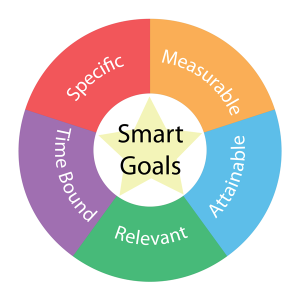Making and Achieving Your New Year’s Resolution
Posted by Century Support Services on Jan 11, 2018

There’s something about January 1 that is inspiring. That first, fresh page of a new calendar is full of promise. This year we can do better, and be better. Enter the famous- or infamous, depending on your point of view — New Year’s resolutions. These vows to change ourselves and to accomplish the things we most want to achieve come up every winter, though of course it’s never too late to set your mind toward reaching a new goal. It’s easy to make a New Year’s resolution on New Year’s Eve and even stick to it for the first week of January. It’s staying with it through the long winter and into spring to actually accomplish what you set out to do that’s hard.
Choose Your Resolution Carefully
When you make a resolution, it’s crucial to pick something that you can actually achieve. If you’re a dedicated couch potato, running a marathon might not be physically possible for you yet, but that’s not to say that a goal related to running or better fitness isn’t a good idea. You just need to “right size” your goal so that you will be able to accomplish it. When you are successful, you’ll feel better about yourself, and this in turn will keep you motivated to continue your quest. If your goal seems impossible, you won’t even try — and then it’s definitely not doable. Successful business people advise that goals should be SMART. SMART is handy acronym to help you craft a goal or, in this case, an achievable New Year’s Resolution. SMART stands for:
Specific
Measurable
Achievable
Relevant
Timely
As you can see, the first thing to do when deciding on your resolution is to be as specific as possible. While “getting healthy” is laudable, it’s also incredibly vague. What will you actually do to get healthy? Is this about diet and exercise or quitting bad habits? The more specific you are about what you want to accomplish, the clearer your path is — you’ll know what you need to do to reach you goal. When you set out to craft your resolution, be as specific and narrow as possible. It’s best to focus on just one critical habit or aspect of your life to work on at a time, you just can’t change everything in one shot. It’s actually better to make your goal a little smaller and reach it than to fail at a big task. After all, you can always make another resolution the minute you accomplish the first one.
One way to make your goal more specific is to make sure it’s measurable. This is how you will know you’ve achieved it, or at least see that you are making steady progress. Using the example of the goal of getting healthy, your measurements could be running an eight to ten minute mile or getting your cholesterol below 200. If you plan to save money, you could have a certain dollar amount as your investment goal. Whatever your resolution is, be sure you attach a way to measure your success.
Finally, it’s also wise to state a time frame for your resolution. Will you give yourself a year to accomplish your goal? A month? Choose a timeline that’s reasonable, but not too long, otherwise you won’t be motivated to work toward your goal and you may fall off the resolution wagon by February.
Breaking Down Your Resolution for Success
Once you have a SMART goal in mind, break it down into specific steps to get there. If you want to save a certain amount  of money, you need a plan to do it, whether it’s making X dollars each weekend as a Lyft driver or having a garage sale once a month to earn money from your unwanted items. Likewise, your health goals should be broken into actionable steps as well. Decide exactly how much exercise to do each day or how many calories to consume. When it comes to changing a habit, it’s a good idea to start small and gradually increase what you’re doing instead of trying to do it all at once. For example, you’d be miserable if you tried to give up caffeine cold turkey, but you can wean yourself off by eliminating an ounce of coffee each week until you’re not drinking any at all. Likewise, adding regular exercise to your routine can be done in small, manageable steps. If you walk just 10 minutes a day the first week and add five more minutes to your routine each week, you’ll easily be getting those 10,000 steps in by spring as you build your stamina.
of money, you need a plan to do it, whether it’s making X dollars each weekend as a Lyft driver or having a garage sale once a month to earn money from your unwanted items. Likewise, your health goals should be broken into actionable steps as well. Decide exactly how much exercise to do each day or how many calories to consume. When it comes to changing a habit, it’s a good idea to start small and gradually increase what you’re doing instead of trying to do it all at once. For example, you’d be miserable if you tried to give up caffeine cold turkey, but you can wean yourself off by eliminating an ounce of coffee each week until you’re not drinking any at all. Likewise, adding regular exercise to your routine can be done in small, manageable steps. If you walk just 10 minutes a day the first week and add five more minutes to your routine each week, you’ll easily be getting those 10,000 steps in by spring as you build your stamina.
Change is hard, but by crafting a SMART New Year’s resolution, you can enjoy the sweet taste of success this coming year